Any time someone forgets to BCC a mass email, it reminds us all that Gmail wasn’t built for large sends. But that hasn’t stopped folks from coming up with ways to do email marketing in Gmail: there are all sorts of Chrome extensions and fully featured apps that allow you to send email campaigns from Gmail.
Even Google lets you create a newsletter in Google Docs and then copy it into Gmail (or send it directly from Docs). But it also offers another hidden option: built-in email newsletter templates in Gmail. Here’s how they work.
You can only use this feature if you have a work or school Gmail account. That means if your email address ends in @gmail.com, you won’t have access.
How to send a newsletter in Gmail
To be clear, I don’t recommend using Gmail for email marketing. But if you’re a small operation, or—in my case, you’re sending out a fundraising announcement to your kid’s preschool—it can make a huge difference in how professional your emails look.
Customize email layouts in Gmail
Here’s how to create a fancy-ish newsletter template in Gmail.
-
Click the Select a layout icon at the bottom of a new email.

-
You’ll see five layout options.
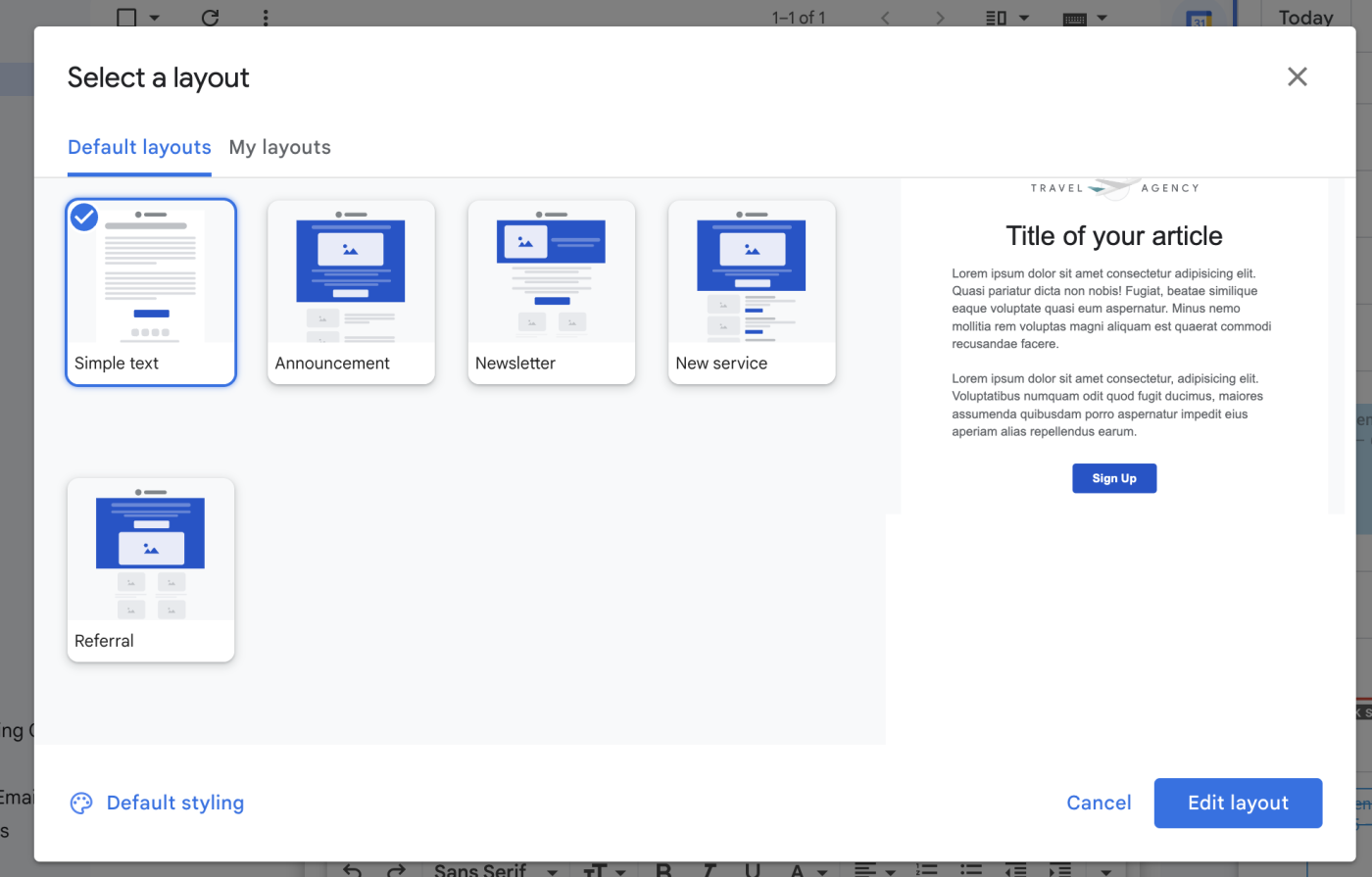
-
Click Default styling. Under Logo, colors & fonts, upload your logo and choose your color and font. (You can use a hex code for color, but your fonts are limited to Gmail’s standard options).
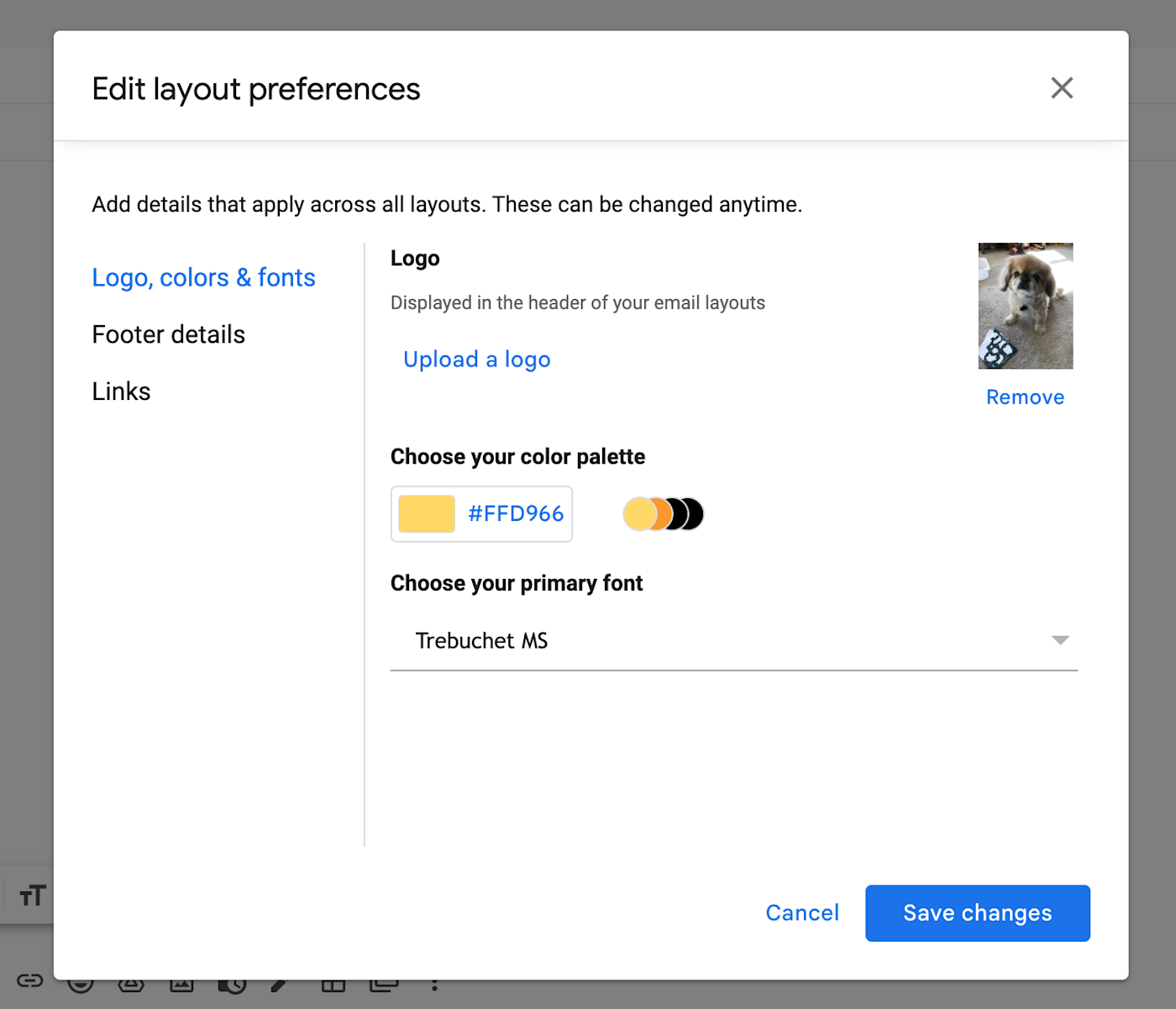
-
Under Footer details, add your business name and address, at minimum.
-
Under Links, add as many links as you want to your website or social media accounts. They’ll end up at the bottom of your email.
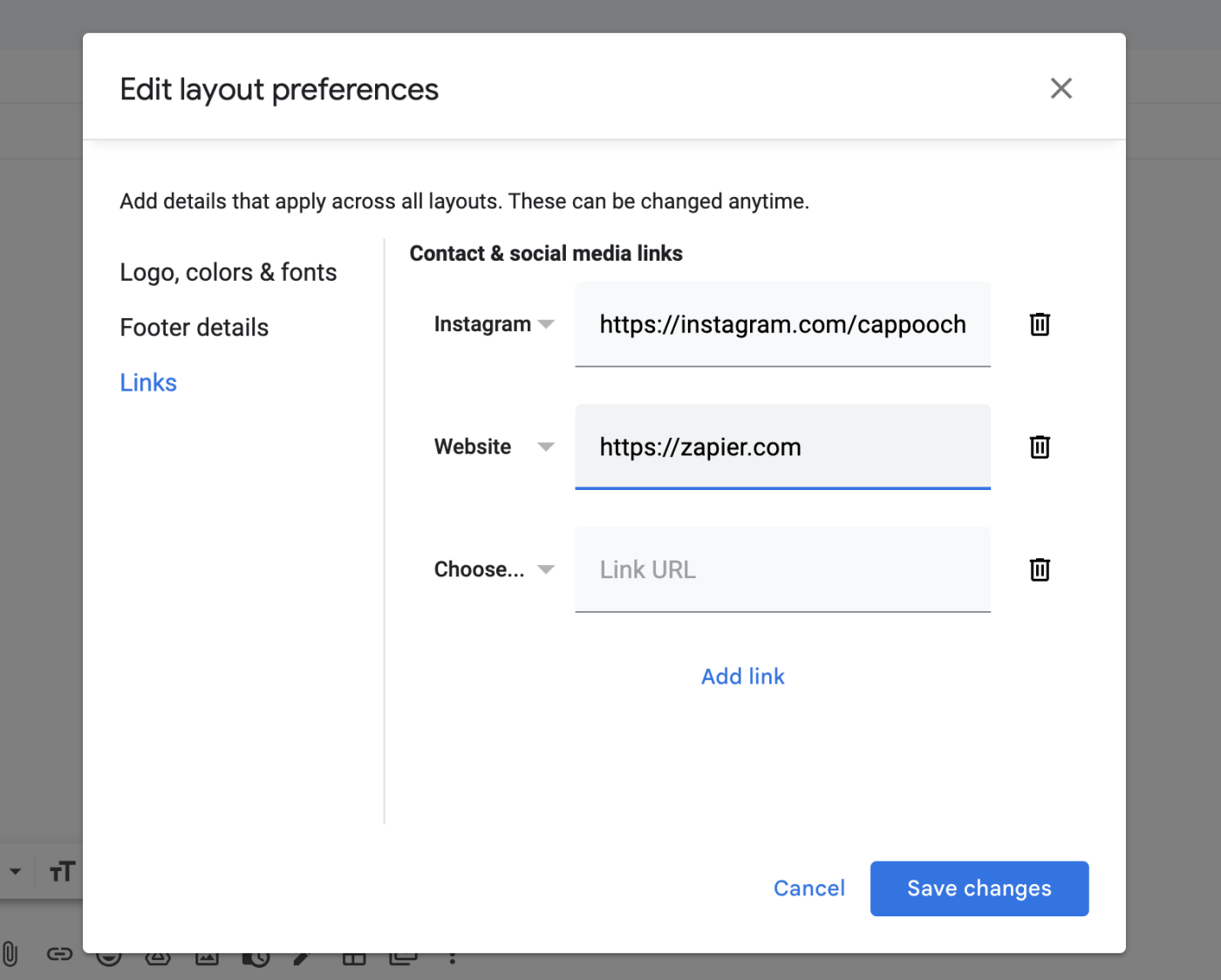
-
Click Save changes. Now, whenever you go to the main screen, all the layouts will be customized to your brand. It also saves you the hassle of recreating your footer every time.
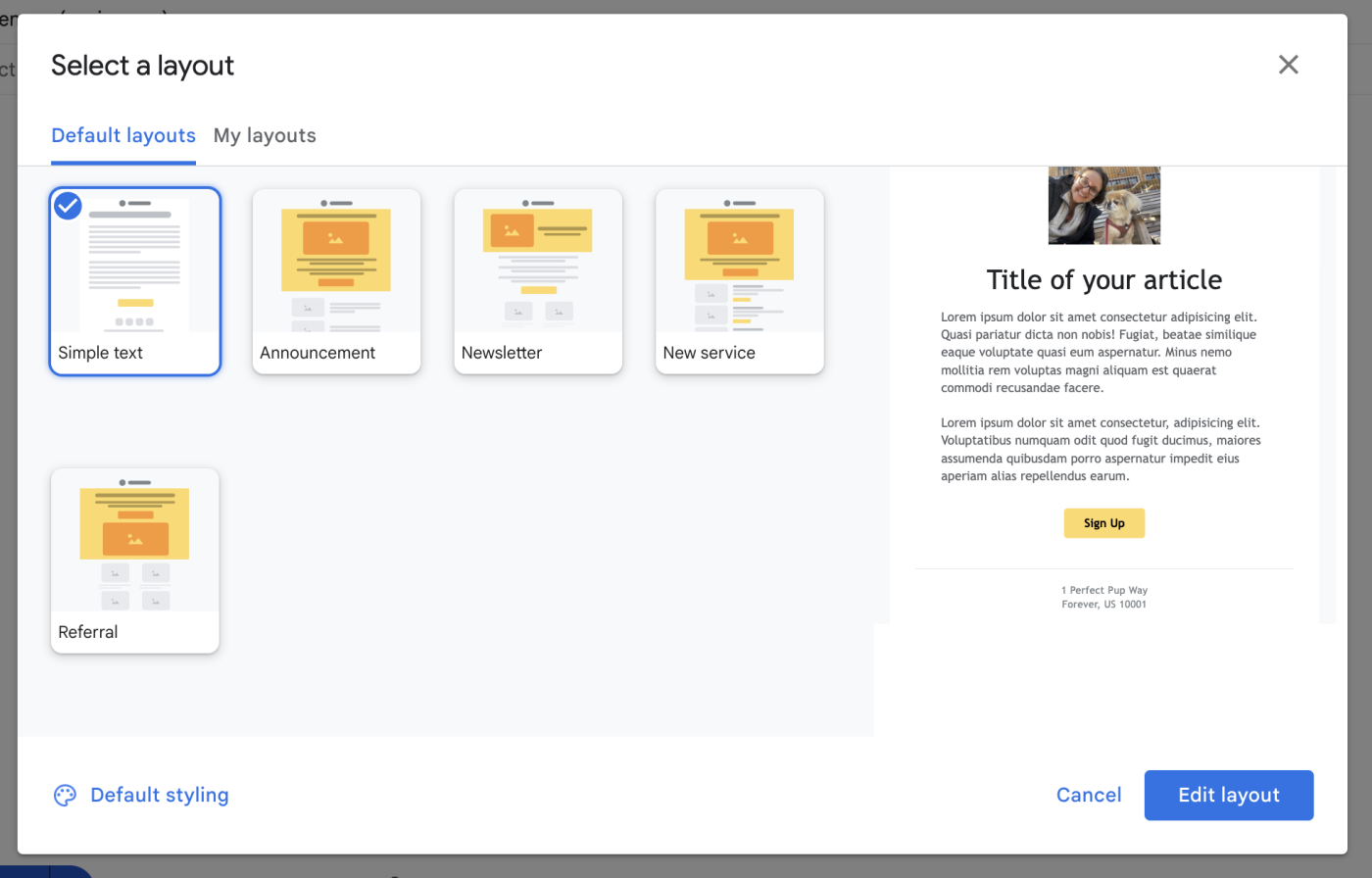
-
Select the layout you want, and click Edit layout. You’ll now be in a Google Sites-esque editor, where you can insert text, buttons, images, and dividers, drag in content blocks, add social links, and generally fiddle around with things. Click the Themes tab on the right to create pre-set colors, fonts, styling, and spacing.
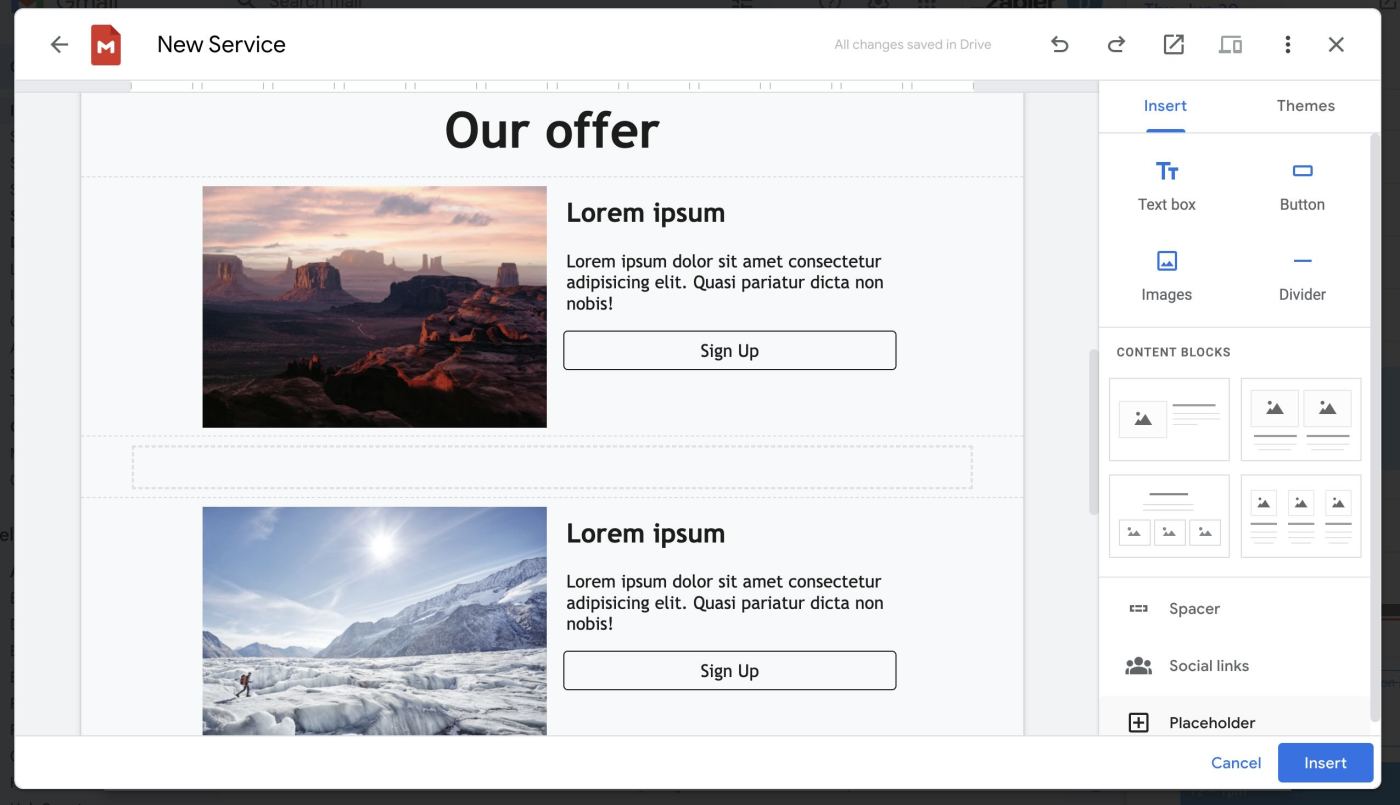
-
Customize the newsletter however you want, add all your text and images, and click Insert.
-
Once you’ve inserted a layout into your email, you can click the Edit icon (a pencil) to go back into the editor and make changes at any time.

There are lots of other options in the editor, too. For example, Click Edit in full screen (a square icon with an arrow) if you really need to go to town on it. Or click Preview (a desktop and mobile icon) to see how the email will look on different devices. The editor for Gmail newsletters really is a slightly less feature-rich version of Google Sites, so to get the most out of it, check out Zapier’s guide to how to use Google Sites.
How to create a custom Gmail newsletter
If you don’t like any of the standard Gmail newsletter layouts, you can build your own. Tread lightly.
-
Click the My layouts tab from the Select a layout menu you were on before.
-
Click New layout.

-
You’ll now be in the editor again, and you can build the newsletter from scratch.
-
Once you’re ready, click Insert, and your new layout will appear in the email you’re composing.
Gmail newsletter tips
There are a few quirks in the system, so here are a few tips from my experience testing this feature.
-
You can customize things more than you think. Because the layout editor is basically a replica of the Google Sites editor, you have a decent number of options. Click all the buttons to see what you can find.
-
Remember to change all the links and images. Gmail used to remind you if you forgot, but no more. Make sure everything is exactly right before you click Send.
-
Schedule your newsletters. By scheduling your emails, you ensure they’re going out at a time when folks will be looking at their email. Plus, it gives you time to realize you’ve accidentally attached your kid’s report card to the message (true story) and undo it.
Should I use Gmail for email marketing?
That’s a real quick no: email marketing with Gmail isn’t a great solution. If you’ve ever used actual email newsletter software before, I don’t need to tell you why. But I will anyway!
-
You can’t personalize the emails to the recipient in any way.
-
There aren’t as many customization options.
-
The contact management is really basic, so you can’t segment your audience easily.
-
There aren’t any analytics, so you can’t measure your email performance.
-
You can’t do any testing (e.g., A/B testing subject lines).
The list goes on. Of course, that doesn’t mean there aren’t valid uses for using Gmail email marketing. If you only send newsletters once in a long while—and they’re just one-off blasts—this will do the trick. If you’re promoting a one-time event for an organization you’re affiliated with, it’s a great way to make the email look pretty. Or if you want to impress your coworkers when you invite them to the company picnic, go for it.
But for most businesses, you’ll want to skip Gmail and go straight to a real email marketing tool.
Automate Gmail
If you’re spending so much time in Gmail that you’re sending newsletters from it, it’s time to delegate some of your inbox tasks to the robots. By connecting Gmail to Zapier, you can do things like create a to-do list from your inbox, automatically save email attachments, or even use AI to automatically label your emails. Learn more about how to automate Gmail, or get started with one of these pre-made templates.
Zapier is a no-code automation tool that lets you connect your apps into automated workflows, so that every person and every business can move forward at growth speed. Learn more about how it works.
Related reading:
This article was originally published in September 2022. The most recent update was in June 2024.